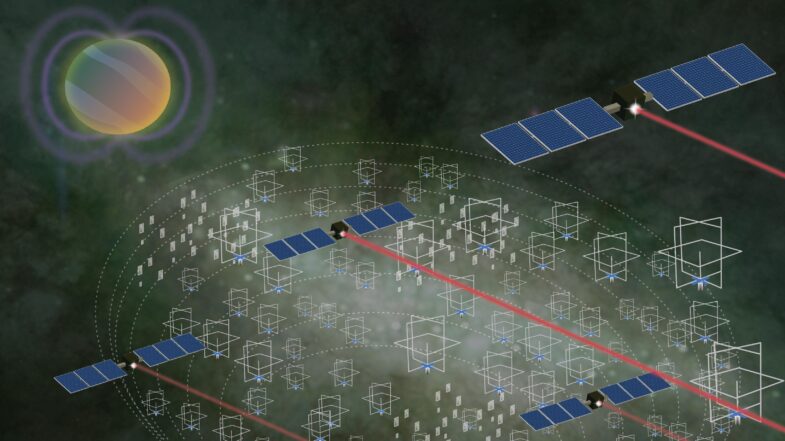
Great Observatory for Long Wavelengths awarded additional NASA funding for Phase II
The Great Observatory for Long Wavelengths (GO-LoW) project has been funded through NASA’s Innovative Advanced Concepts (NIAC) for a Phase II study. The NIAC program awards grants to particularly visionary concepts for additional funding and development. Phase II, lasting two years, will enable the team to delve into solutions for technical challenges identified in Phase I.
Led by Mary Knapp of MIT Haystack Observatory, GO-LoW is a novel telescope concept — an array of thousands of tiny, identical satellites, each smaller than a shoebox, working together to observe the universe at low-frequency radio-wave emissions. Traditional space telescopes deploy a single large, expensive spacecraft; GO-LoW comprises thousands of small, cheap, and easily replaceable small satellites to form a large “virtual” telescope.
The universe has not yet been mapped in detail at these low frequencies, because the Earth’s ionosphere blocks these signals from view. The GO-LoW observatory will obtain crucial information about exoplanetary and stellar magnetic fields, as well as the early history of the universe, known as the cosmic “Dark Ages,” and other high-interest astronomical data.
The official NASA press release is available here:
NASA Press Release:
https://www.nasa.gov/directorates/stmd/nasa-doubles-down-advances-six-innovative-tech-concepts-to-new-phase/
with additional details on the NASA GO-LoW page:
NASA GO-LoW Phase II:
https://www.nasa.gov/directorates/stmd/niac/niac-studies/the-great-observatory-for-long-wavelengths-go-low/
The GO-LoW team of scientists and engineers also includes Lenny Paritsky (Haystack); Melodie Kao (Lowell Observatory); Kat Kononov, Arthur Lue, and Jade Wang (MIT Lincoln Laboratory); and Jake Turner (Cornell University).
In Phase II, the GO-LoW team will build on the strong foundations established in Phase I, with a focus on simulating the autonomous operations of a large satellite constellation outside Earth’s orbit. This constellation paradigm is expected to be useful for a range of applications across Earth science, planetary science, and heliophysics.
(Media requests: please email Nancy Kotary.)